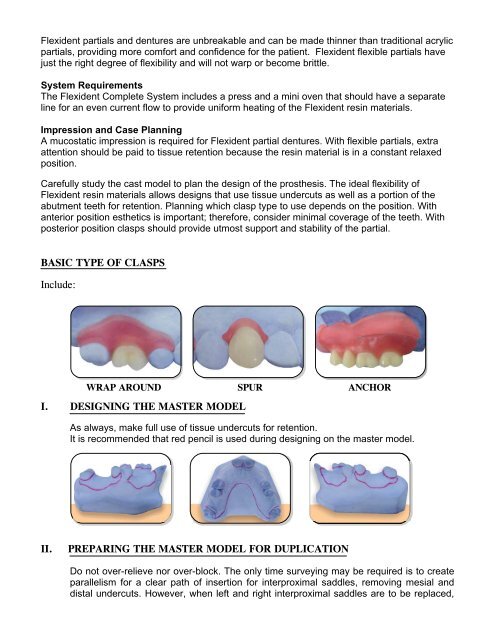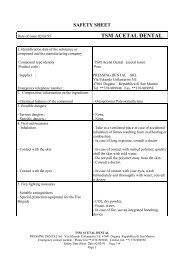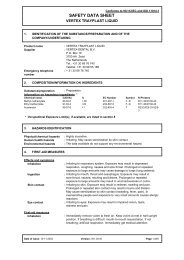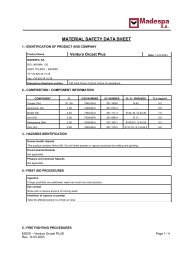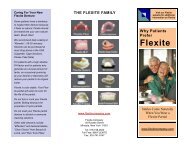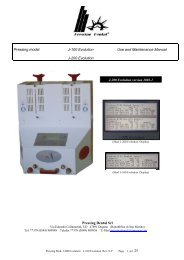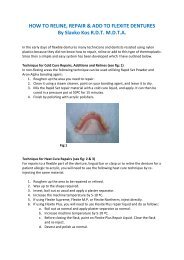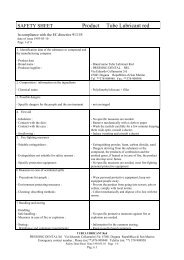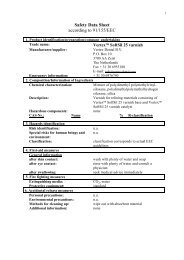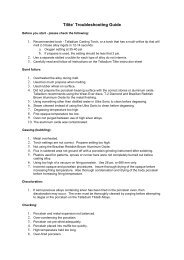Flexident Instructions
Flexident Instructions
Flexident Instructions
Create successful ePaper yourself
Turn your PDF publications into a flip-book with our unique Google optimized e-Paper software.
<strong>Flexident</strong> partials and dentures are unbreakable and can be made thinner than traditional acrylic<br />
partials, providing more comfort and confidence for the patient. <strong>Flexident</strong> flexible partials have<br />
just the right degree of flexibility and will not warp or become brittle.<br />
System Requirements<br />
The <strong>Flexident</strong> Complete System includes a press and a mini oven that should have a separate<br />
line for an even current flow to provide uniform heating of the <strong>Flexident</strong> resin materials.<br />
Impression and Case Planning<br />
A mucostatic impression is required for <strong>Flexident</strong> partial dentures. With flexible partials, extra<br />
attention should be paid to tissue retention because the resin material is in a constant relaxed<br />
position.<br />
Carefully study the cast model to plan the design of the prosthesis. The ideal flexibility of<br />
<strong>Flexident</strong> resin materials allows designs that use tissue undercuts as well as a portion of the<br />
abutment teeth for retention. Planning which clasp type to use depends on the position. With<br />
anterior position esthetics is important; therefore, consider minimal coverage of the teeth. With<br />
posterior position clasps should provide utmost support and stability of the partial.<br />
BASIC TYPE OF CLASPS<br />
Include:<br />
WRAP AROUND SPUR ANCHOR<br />
I. DESIGNING THE MASTER MODEL<br />
As always, make full use of tissue undercuts for retention.<br />
It is recommended that red pencil is used during designing on the master model.<br />
II. PREPARING THE MASTER MODEL FOR DUPLICATION<br />
Do not over-relieve nor over-block. The only time surveying may be required is to create<br />
parallelism for a clear path of insertion for interproximal saddles, removing mesial and<br />
distal undercuts. However, when left and right interproximal saddles are to be replaced,


